Guaranteed Cost Control of Singular Fuzzy Time-Delay Systems Based on Proportional Plus Derivative Feedback
Abstract
1. Introduction
- (1)
- A memorial PDSF controller is designed, and a solution for determining the controller gains is provided based on the free-weight matrix method.
- (2)
- By designing an augmented Lyapunov functional that includes multiple integral terms and applying the technique of integral inequality scaling, results that ensure the system is NS can be obtained.
2. Problem Formulation and Preliminaries
- (1)
- The matrix is nonsingular.
- (2)
- The closed-loop system is stable.
3. Main Results
4. Numerical Examples
5. Conclusions
Author Contributions
Funding
Data Availability Statement
Conflicts of Interest
References
- Feng, Z.; Shi, P. Two equivalent sets: Application to singular systems. Automatica 2017, 77, 198–205. [Google Scholar] [CrossRef]
- Sahereh, B.; Aliakbar, J.; Ali, K.S. H∞ filtering for descriptor systems with strict LMI conditions. Automatica 2017, 80, 88–94. [Google Scholar] [CrossRef]
- Li, M.; Sun, L.; Yang, R. Finite-time H∞ control for a class of discrete-time nonlinear singular systems. J. Frankl. Inst. 2018, 355, 5384–5393. [Google Scholar] [CrossRef]
- Shi, Z.; Wang, Z. Optimal control for a class of complex singular system based on adaptive dynamic programming. IEEE/CAA J. Autom. Sin. 2019, 6, 188–197. [Google Scholar] [CrossRef]
- Jin, Z.; Wang, Z. Input-to-state stability of the nonlinear singular systems via small-gain theorem. Appl. Math. Comput. 2021, 402, 126171. [Google Scholar] [CrossRef]
- Xu, H.; Yu, D.; Wang, Z.; Cheong, K.H.; Chen, C.L.P. Nonsingular predefined time adaptive dynamic surface control for quantized nonlinear systems. IEEE Trans. Syst. Man Cybern. Syst. 2024, 54, 5567–5579. [Google Scholar] [CrossRef]
- Sui, S.; Chen, C.L.P.; Tong, S. Command filter-based predefined time adaptive control for nonlinear systems. IEEE Trans. Autom. Control. 2024, 69, 7863–7870. [Google Scholar] [CrossRef]
- Yang, L.; Wang, Q.; Xiao, Y.; Li, Z. Hysteresis modeling of piezoelectric actuators based on a T-S fuzzy model. Electronics 2022, 11, 2786. [Google Scholar] [CrossRef]
- Zhang, Q.; Qiao, L.; Zhu, B.; Zhang, H. Dissipativity analysis and synthesis for a class of T-S fuzzy descriptor systems. IEEE Trans. Syst. Man Cybern. Syst. 2016, 47, 1774–1784. [Google Scholar] [CrossRef]
- Fan, X.; Li, T.; Wang, Z. Asynchronous event-triggered linear sliding mode control for T-S fuzzy singular systems. J. Frankl. Inst. 2023, 360, 12829–12854. [Google Scholar] [CrossRef]
- Lu, X.; Ren, J. A novel design of nonfragile observer-based controller for discrete fuzzy descriptor systems via sliding-mode approach. IEEE Trans. Circuits Syst. Express Briefs 2024, 71, 231–235. [Google Scholar] [CrossRef]
- Keerthana, N.; Sakthivel, R.; Aravinth, N.; Marshal Anthoni, S. Unified finite-time fault estimation and fault-tolerant control for Takagi–Sugeno fuzzy singular systems. Int. J. Adapt Control Signal Process. 2024, 38, 1812–1828. [Google Scholar] [CrossRef]
- Zhang, C.K.; He, Y.; Jiang, L.; Wu, M.; Wang, Q.G. An extended reciprocally convex matrix inequality for stability analysis of systems with time-varying delay. Automatica 2017, 85, 481–485. [Google Scholar] [CrossRef]
- Zhou, X.; Wang, Y.; Zhang, S.; Ji, S. Dual event-triggered controller co-design for networked control systems with network-induced delays. Electronics 2023, 12, 4003. [Google Scholar] [CrossRef]
- Zhang, D.; Zheng, X. Improved command filtered backstepping control for uncertain nonlinear systems with time-delay. Electronics 2024, 13, 2694. [Google Scholar] [CrossRef]
- Abbasi Moshaei, A.R.; Mohammadi Moghaddam, M.; Dehghan Neistanak, V. Analytical model of hand phalanges desired trajectory for rehabilitation and design a sliding mode controller based on this model. Modares Mech. Eng. 2020, 20, 129–137. [Google Scholar]
- Cui, Y.; Feng, H.; Zhang, W.; Huang, T. Positivity and stability analysis of T–S fuzzy descriptor systems with bounded and unbounded time-varying delays. IEEE Trans. Cybern. 2021, 52, 11649–11660. [Google Scholar] [CrossRef]
- Zheng, W.; Lam, H.K.; Sun, F.; Wen, S. Robust stability analysis and feedback control for uncertain systems with time-delay and external disturbance. IEEE Trans. Fuzzy Syst. 2022, 30, 5065–5077. [Google Scholar] [CrossRef]
- Chen, Y.; Chen, G. Hierarchical admissibility criteria for T-S fuzzy singular systems with time-varying delay. Fuzzy Sets Syst. 2024, 492, 109065. [Google Scholar] [CrossRef]
- Yang, P.; Ma, Y.; Yang, F.; Kong, D.; Wang, L. Passivity control for uncertain singular discrete T–S fuzzy time-delay systems subject to actuator saturation. Int. J. Syst. Sci. 2018, 49, 1627–1640. [Google Scholar] [CrossRef]
- Zhang, J.; Zhu, F.; Karimi, H.R.; Wang, F. Observer-based sliding mode control for T–S fuzzy descriptor systems with time delay. IEEE Trans. Fuzzy Syst. 2019, 27, 2009–2023. [Google Scholar] [CrossRef]
- Feng, Z.; Yang, Y.; Jiang, Z.; Zhao, Y.; Yuan, X. Admissibility and admissibilization of singular polynomial fuzzy systems with time-varying delay. Int. J. Fuzzy Syst. 2021, 23, 81–93. [Google Scholar] [CrossRef]
- Duan, G.-R.; Zhang, B. Robust control system design using proportional plus partial derivative state feedback. Acta Autom. Sin. 2007, 33, 506–510. [Google Scholar] [CrossRef]
- Mu, Y.; Zhang, H.; Su, H.; Wang, Y. Robust normalization and H∞ stabilization for uncertain Takagi-Sugeno fuzzy singular systems with time-delays. Appl. Math. Comput. 2021, 388, 125534. [Google Scholar] [CrossRef]
- Feng, Z.; Zhang, H.; Li, R.B. State and static output feedback control of singular Takagi–Sugeno fuzzy systems with time-varying delay via proportional plus derivative feedback. Inf. Sci. 2022, 608, 1334–1351. [Google Scholar] [CrossRef]
- Ku, C.C.; Chang, W.J.; Tsai, M.H.; Lee, Y.-C. Observer-based proportional derivative fuzzy control for singular Takagi-Sugeno fuzzy systems. Inf. Sci. 2021, 570, 815–830. [Google Scholar] [CrossRef]
- Liu, R.R.; Xiong, J.; Zhang, Z. Reliable induced L∞ control for polytopic uncertain continuous-time singular systems with dynamic quantization. Appl. Math. Comput. 2023, 443, 127765. [Google Scholar] [CrossRef]
- Shen, Y.; Zhang, W.; Ni, H.; Zhang, D.; Yu, L. Guaranteed cost control of networked control systems with DoS attack and time-varying delay. Int. J. Control Autom. Syst. 2019, 17, 811–821. [Google Scholar] [CrossRef]
- Wong, K.Y.; Tanaka, M.; Tanaka, K. Path-following-based design for guaranteed cost control of polynomial fuzzy systems. Int. J. Fuzzy Syst. 2021, 23, 1–12. [Google Scholar] [CrossRef]
- Liu, M.; Wu, B.; Wang, Y.E.; Liu, L. Dynamic output feedback control and guaranteed cost finite-time boundedness for uncertain switched linear systems. Int. J. Control Autom. Syst. 2023, 21, 400–409. [Google Scholar] [CrossRef]
- Zhu, R.; Liu, L.; Wu, Z.; Liu, C. Guaranteed cost fault-tolerant control for uncertain stochastic systems via dynamic event-triggered adaptive dynamic programming. J. Frankl. Inst. 2023, 360, 11641–11664. [Google Scholar] [CrossRef]
- Thanh, N.T.; Thuan, M.V.; Tuan, T.N. New results on finite-time guaranteed cost control of uncertain polytopic fractional-order systems with time-varying delays. Optim. Control Appl. Methods 2023, 44, 2504–2516. [Google Scholar] [CrossRef]
- Tian, W.; Zhang, H. Optimal guaranteed cost control for fuzzy descriptor systems with time-varying delay. J. Syst. Eng. Electron. 2008, 19, 584–591. [Google Scholar]
- Ren, J.; Zhang, X. Guaranteed cost control for nonlinear singular system with time delays using T-S fuzzy model. Appl. Math. Inf. Sci. 2013, 7, 1615–1622. [Google Scholar] [CrossRef]
- Han, C.; Wu, L.; Lam, H.K.; Zeng, Q. Nonfragile control with guaranteed cost of T–S fuzzy singular systems based on parallel distributed compensation. IEEE Trans. Fuzzy Syst. 2014, 22, 1183–1196. [Google Scholar] [CrossRef]
- Ren, J.; Zhang, Q. Robust normalization and guaranteed cost control for a class of uncertain descriptor systems. Automatica 2012, 48, 1693–1697. [Google Scholar] [CrossRef]
- Zhuang, G.; Xia, J.; Zhang, B.; Sun, W. Robust normalisation and P–D state feedback control for uncertain singular Markovian jump systems with time-varying delays. IET Control Theory Appl. 2018, 12, 419–427. [Google Scholar] [CrossRef]
- Park, P.G.; Lee, W.I.; Lee, S.Y. Auxiliary function-based integral inequalities for quadratic functions and their applications to time-delay systems. J. Frankl. Inst. 2015, 352, 1378–1396. [Google Scholar] [CrossRef]
- Feng, Z.; Zhang, H.; Lam, H.K. New results on dissipative control for a class of singular Takagi–Sugeno fuzzy systems with time delay. IEEE Trans. Fuzzy Syst. 2022, 30, 2466–2475. [Google Scholar] [CrossRef]
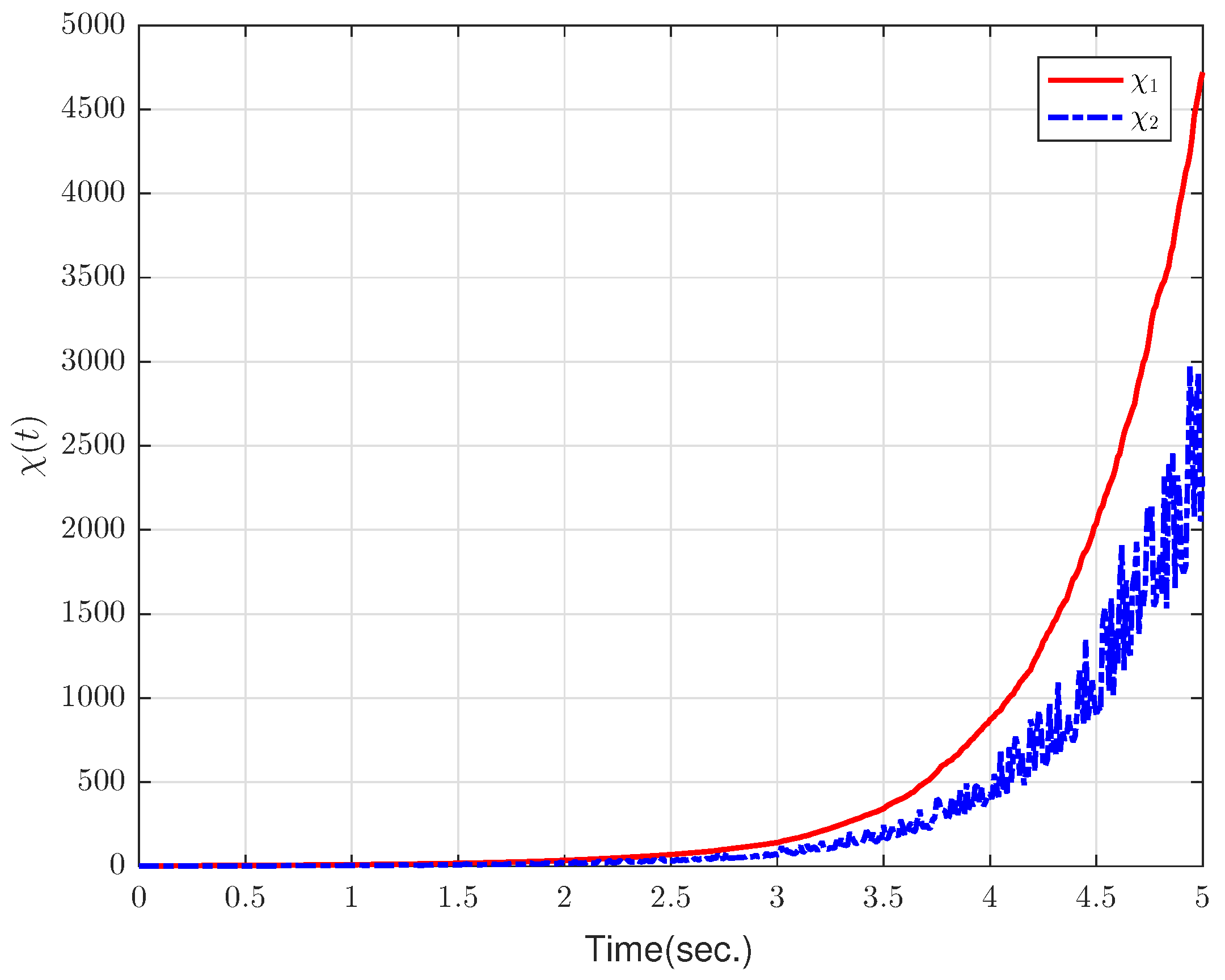

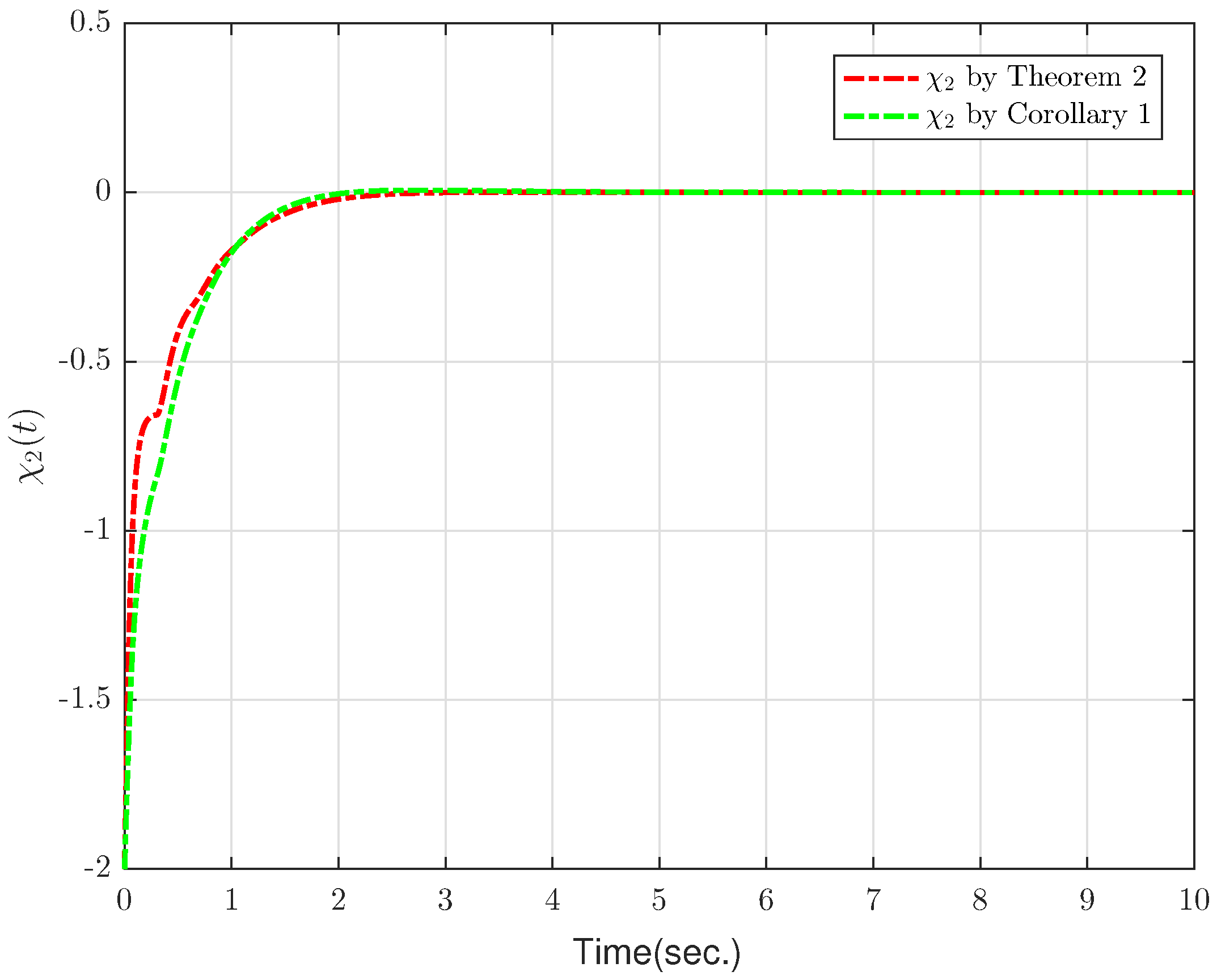
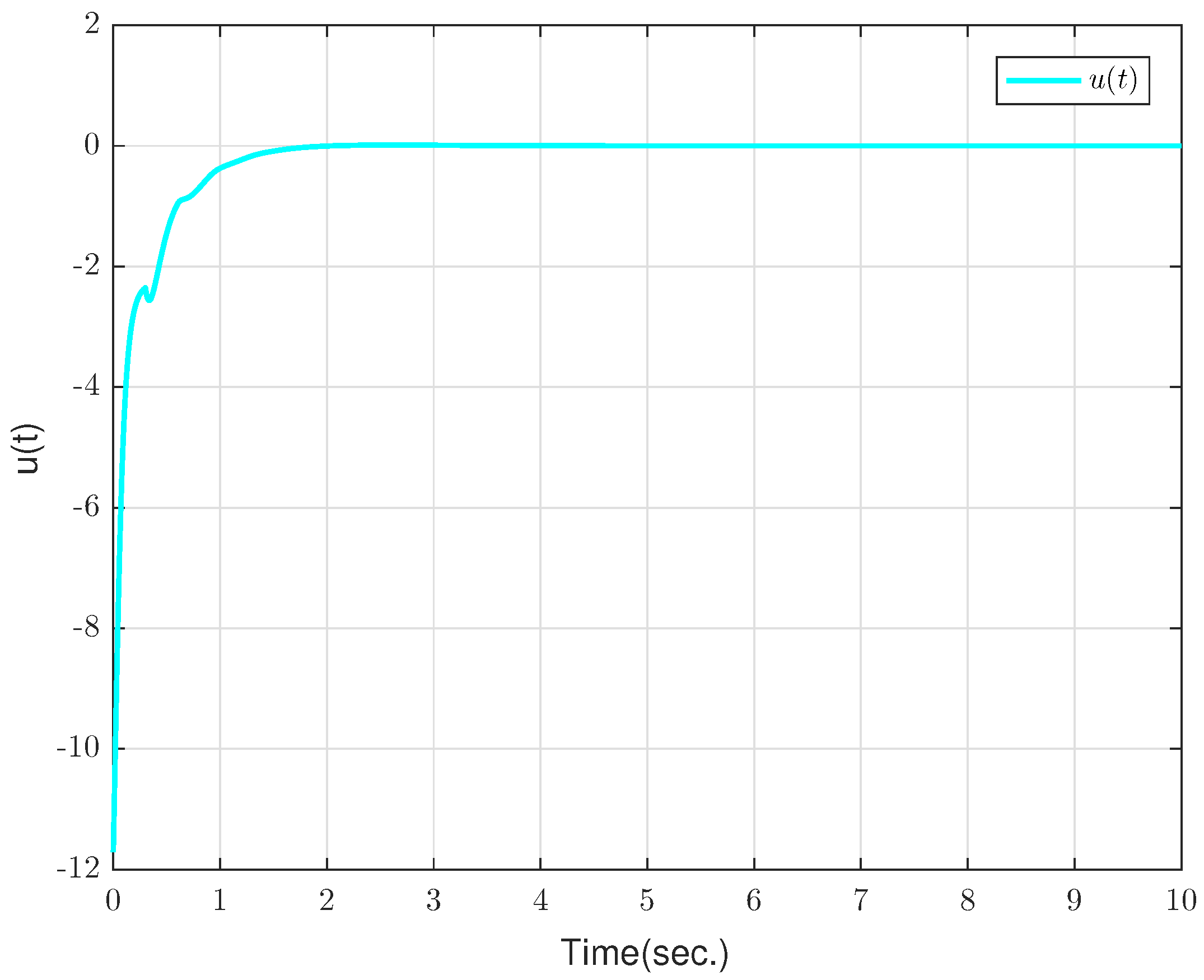
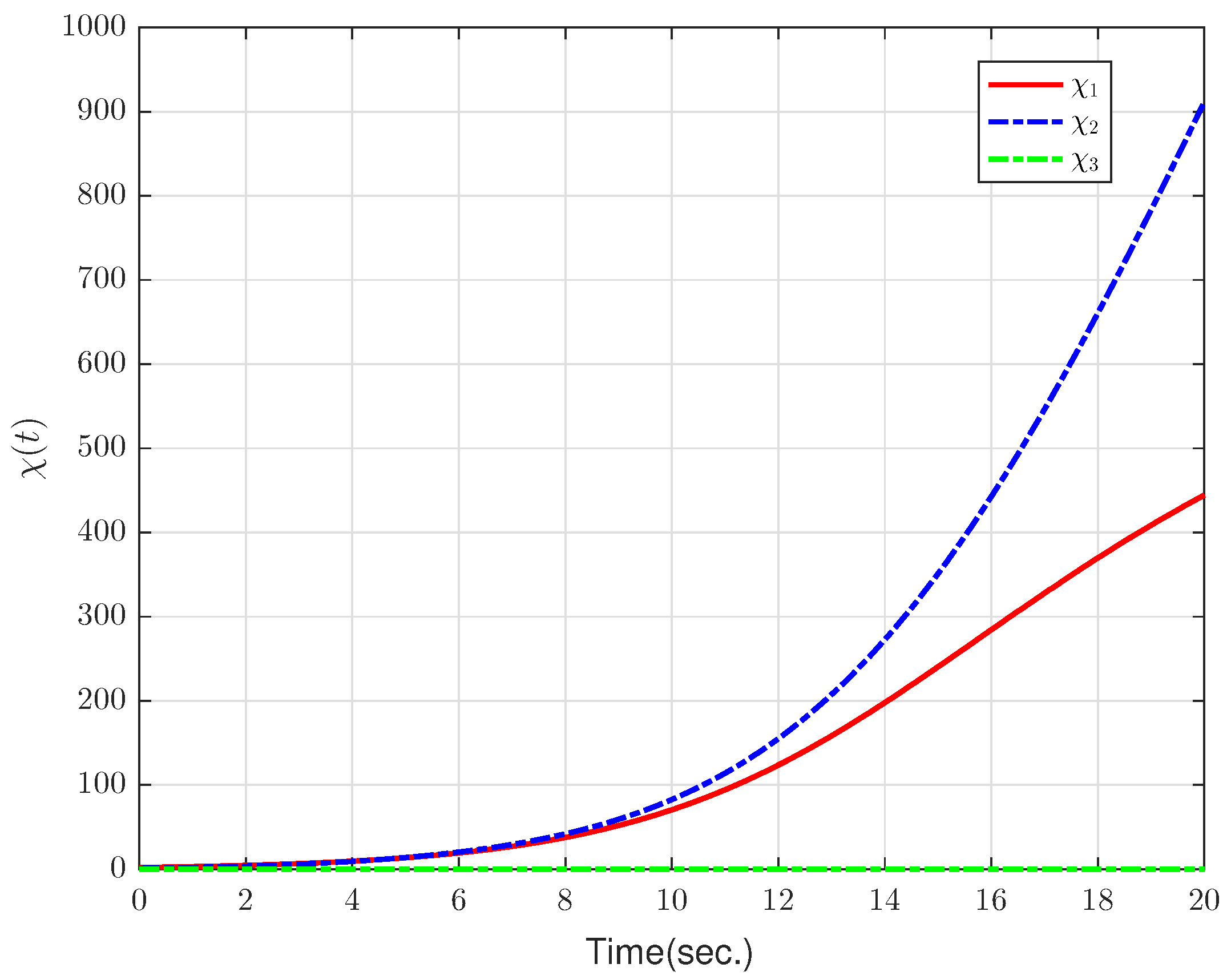
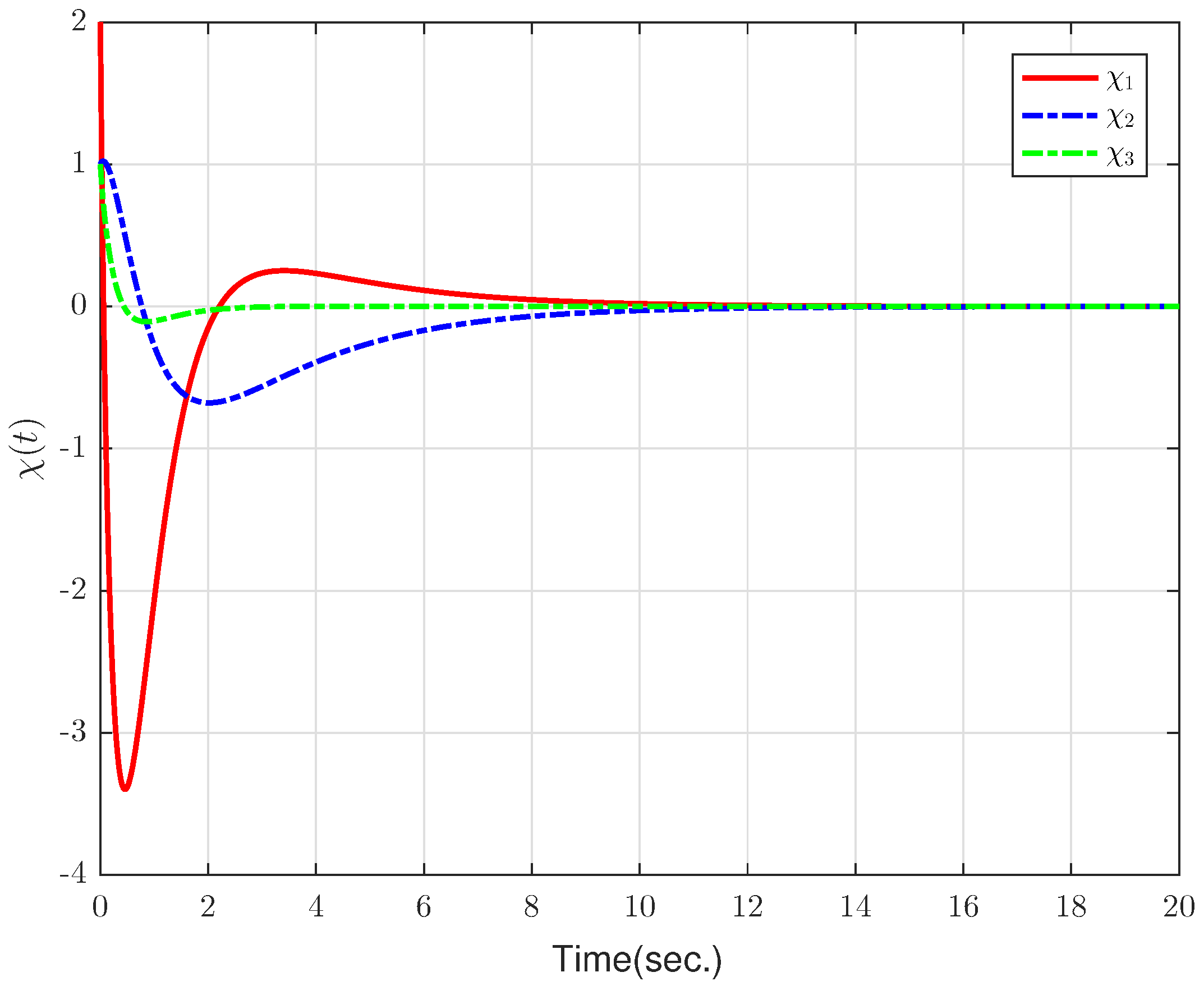
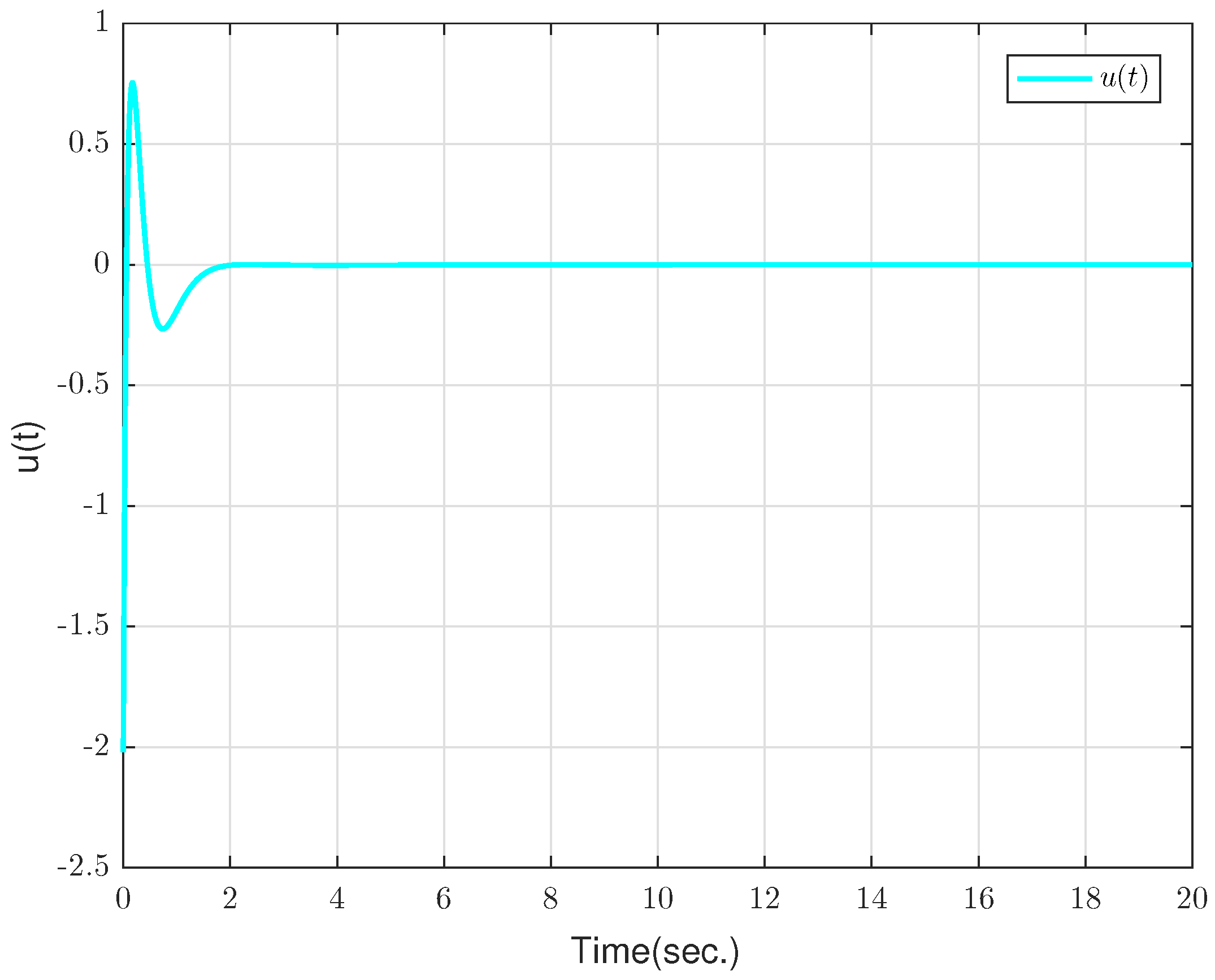
Disclaimer/Publisher’s Note: The statements, opinions and data contained in all publications are solely those of the individual author(s) and contributor(s) and not of MDPI and/or the editor(s). MDPI and/or the editor(s) disclaim responsibility for any injury to people or property resulting from any ideas, methods, instructions or products referred to in the content. |
© 2024 by the authors. Licensee MDPI, Basel, Switzerland. This article is an open access article distributed under the terms and conditions of the Creative Commons Attribution (CC BY) license (https://creativecommons.org/licenses/by/4.0/).
Share and Cite
Zhang, H.; Wang, H.; Wang, X. Guaranteed Cost Control of Singular Fuzzy Time-Delay Systems Based on Proportional Plus Derivative Feedback. Electronics 2024, 13, 4554. https://doi.org/10.3390/electronics13224554
Zhang H, Wang H, Wang X. Guaranteed Cost Control of Singular Fuzzy Time-Delay Systems Based on Proportional Plus Derivative Feedback. Electronics. 2024; 13(22):4554. https://doi.org/10.3390/electronics13224554
Chicago/Turabian StyleZhang, Huayang, Hebin Wang, and Xin Wang. 2024. "Guaranteed Cost Control of Singular Fuzzy Time-Delay Systems Based on Proportional Plus Derivative Feedback" Electronics 13, no. 22: 4554. https://doi.org/10.3390/electronics13224554
APA StyleZhang, H., Wang, H., & Wang, X. (2024). Guaranteed Cost Control of Singular Fuzzy Time-Delay Systems Based on Proportional Plus Derivative Feedback. Electronics, 13(22), 4554. https://doi.org/10.3390/electronics13224554





